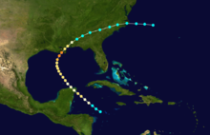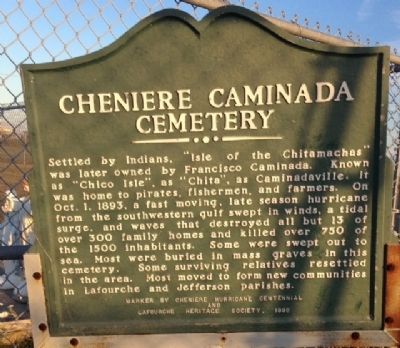
On the morning of October 2, 1893, a severe hurricane came roaring across the Louisiana coast near the village of Chenière Caminada, all but wiping the town flat and killing over half the population.
Like many late season hurricanes, this storm formed from a disturbance in the western Caribbean Sea around Sept. 27th. By the morning of the 29th it was a full-blown hurricane and brushing the northeast tip of the Yucatan peninsula. This only slightly weakened the storm and it soon regained its force over the warm waters of the Gulf of America.
Due to an approaching front, the hurricane recurved over the northern Gulf, and, by the night of Oct. 1st, its winds were felt along the Louisiana coast. It rapidly intensified into a major hurricane and made landfall the next morning with winds estimated at 133 mph (213 km/hr). The storm surge of nearly 18 feet (5.5 m) swept away all but one house in the small community west of Grand Isle. 779 of the town’s 1471 people died in the storm.

The hurricane moved over the Mississippi delta and into southern Mississippi and Alabama bringing surges along the coast and high winds inland. It weakened to a tropical storm as it moved over Georgia and the Carolinas then out to sea. Over the course of the storm it killed over 2000 people and caused US$5 million in damage.
This was the third deadly hurricane to strike the United States that year. After the “Midnight” hurricane struck New York City, the “Sea Islands” hurricane in mid-August had caused between 1000-2000 casualties, making 1893 one of the deadliest U.S. hurricane seasons.